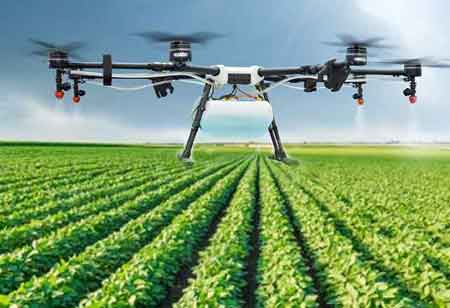Thank you for Subscribing to Agri Business Review Weekly Brief
What Does The Future Of Sensors And Data Collection In Vertical Farming Look Like?
Vertical farming is widely acknowledged to have numerous advantages over regular crop-growing methods.

By
Agri Business Review | Thursday, May 19, 2022
Stay ahead of the industry with exclusive feature stories on the top companies, expert insights and the latest news delivered straight to your inbox. Subscribe today.
Sensors and the data they collect are undeniably important in the continued advancement of vertical farms.
Fremont, CA: Vertical farming is widely acknowledged to have numerous advantages over regular crop-growing methods. Despite relatively expensive setup and running expenses, vertical farms easily outperform even the most modern greenhouses in terms of productivity per unit of the growth area. However, in order to maintain this level of output, you must guarantee that growing conditions are optimal at all times. This is where sensors and data come into play and why they're poised to change the face of vertical farming in the future.
To properly employ sensors and data, you must first understand what data is relevant and why. The most significant parameters to monitor are growing circumstances such as climate, plant temperature, and other factors. Sensors allow us to keep track of these growing circumstances, spot anomalies, and spot problems early on. We can respond proactively rather than reactively by detecting difficulties early on. This is especially true for system-related issues, such as temperature deviations from an intended setpoint, which can be corrected quickly.
Measurement of growth results and monitoring of growth circumstances gives significant data – employing characteristics like plant size, height, weight, and color. We can use cameras to collect photographs of the plants in the growth layer. For example, we can track growth over time and compare it to data from prior growth cycles under comparable conditions to see if growth is meeting expectations. Cameras, like sensors, can aid in early problem identification by detecting early-stage growth deficits and diseases.
The future of vertical farming
Modern sensor technologies and data science already provide several benefits, but technical breakthroughs in areas such as artificial intelligence (AI) promise to be really transformative. In a technique called supervised learning, Signify is actively investigating AI-based algorithms that can train models to match realized growth conditions with realized growth results. This will allow us to estimate the exact growth conditions required for optimal growth – and to meet the most exacting grower requirements. Machine learning and AI approaches can be used to examine photos of plant growth to discover any unexpected deviations or growth limitations quickly.
For plant specialists, the combination of a sensor and data platform with cloud apps adds significant value - from monitoring the growth process and recognizing problems as early as possible to expedite the creation of new optimum growth recipes.





